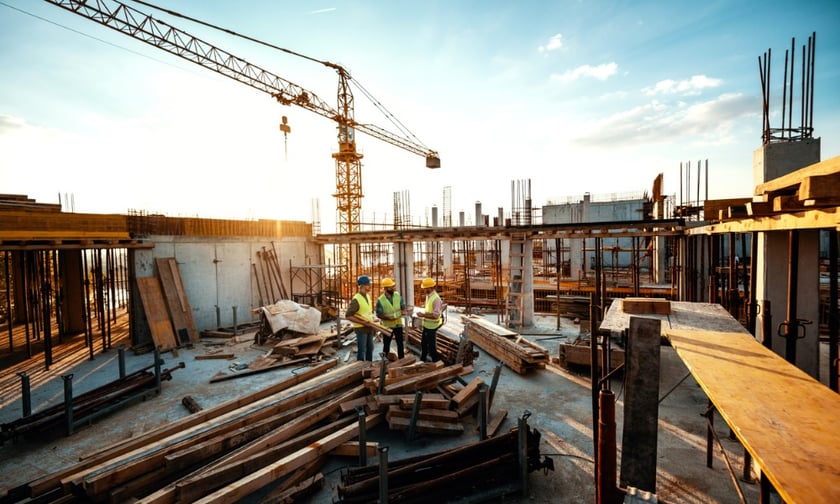

Ever since the Investing in Canada Plan launched in 2016, the Government of Canada has invested over $101 billion in over 74,500 projects, designed to achieve three objectives: create long-term economic growth to build a stronger middle class; support the resilience of communities and transition to a clean growth economy; and build social inclusion and socio-economic outcomes for all Canadians.
Over a 12-year time span, the federal government has committed over $180 billion for infrastructure projects, from transit to trading ports, broadband networks to energy systems, community services to natural spaces.
This type of major investment in public infrastructure is not isolated to Canada alone. In fact, the global construction market is set for a period of explosive growth as countries around the world try to stimulate economic activity after the COVID-19 pandemic by pumping money into large infrastructure projects, residential construction to meet the needs of growing populations, and to drive the low carbon transition.
According to a recent Allianz Global Corporate & Specialty (AGCS) report, Managing the new age of construction risk, the strong growth outlook for the sector is based on a number of factors, including rising populations and significant investment in alternative forms of energy such as wind, solar and hydrogen, as well as power storage and transmission systems.
“We’re going to see a massive uptick [in construction] nationally and internationally, with respect to infrastructure – and not just typical civil infrastructure, but you’ll also see it with respect to power asset protection or safeguarding, where countries are making those systems more robust to prevent failures,” said Michael Pignataro, regional head of energy & construction – North America for AGCS. “You’ll see coastal and flood defences go up. You’ll see a more robust application for hospitals, airports, and things like that. So, it’s not just bridges, highways, tunnels, or things of that nature. It’s a more expansive capital spending.”
AGCS is not the only firm to project high output for the construction industry in the years to come. A recent report published by Marsh and Guy Carpenter, Future of Construction: A Global Forecast for Construction to 2030, suggests global construction output could grow 42% or US$4.5 trillion between 2020 and 2030. But all three insurance giants have highlighted one significant challenge that the industry faces – a distinct shortage of experience and skilled labour.
Richard Gurney, global head of construction at Marsh Specialty, said: “If you look at the biggest stakeholders in the construction industry, they’re pretty much unanimous that a lack of experienced people/industry labour is their biggest challenge.” He said one thing the industry must do if it wants to address the talent shortage is alter its appearance.
“The industry is looking to reposition itself as a more attractive, enjoyable industry environment,” Gurney explained. “Construction can be quite a tough industry, with people away [on a project] for a long time [and working outside in tough conditions]. And having gone through the challenges of a pandemic, people might stop and reappraise what is an acceptable work/life balance for them, and what they want from their employment. That won’t make the search for experienced labour any easier. If you’re going out and looking for a different subset of graduates or skilled individuals, your narrative around the construction industry probably has to change from what it was before.”
Pignataro said the construction industry is likely to respond to the influx in demand for skilled labour differently in the short- to long-term. He commented: “The thing that makes construction unique is that it’s not something you can outsource. You can’t defer the swinging of a hammer to somebody in a foreign country at a cheaper rate. So, in the short-term, what companies will be required to do is to really improve efficiency. That’s going to come more out of the planning of jobs by the contractor, and the delivery schedule also becomes more important.
“Your ability to look at all of your jobs, manage all of your jobs with a limited workforce to become more efficient, and manage the timing to say: ‘I need your crew on this job for these four days. And on the fifth day, I need you to move across town to this next job.’ You can’t afford delays. So, in the short-term, companies are going to have to get more efficient, better at planning, and for those that are already good at planning, they’ll need to improve even more.”
In the mid- to long-term, meeting the construction industry’s labour demands will require a more “fundamental shift in mindset,” according to Pignataro. In developed nations like Canada, the narrative has long been that people should strive to do well in school, so that they can go to college, and eventually get a job.
“That was the narrative, and that was the plan,” Pignataro told Insurance Business. “But now you’ve got an entire generation who – whether it be due to financial crashes, pandemics, rising tuition costs, student loan problems, both on a micro and macro-economic level – have become disillusioned by it all. And these types of construction jobs, these types of positions that are needed, may be something that comes to the aid. They could sync up beautifully. People will begin to explore trade more, they don’t take on the debt, there’s substantial demand for it, so wages should hold.
“That is the mid- and long-term solution. The construction industry is simply going to need more bodies, whether they be engineers, tradesmen, crafts people, and whether they come up through trade schools or apprenticeship. And I think the infrastructure’s there with the industry, the unions, and the trade schools. Does it need to be expanded? Of course, but I think it’s there, and I think the construction industry can meet the labour challenge in the mid- to long-term.”
